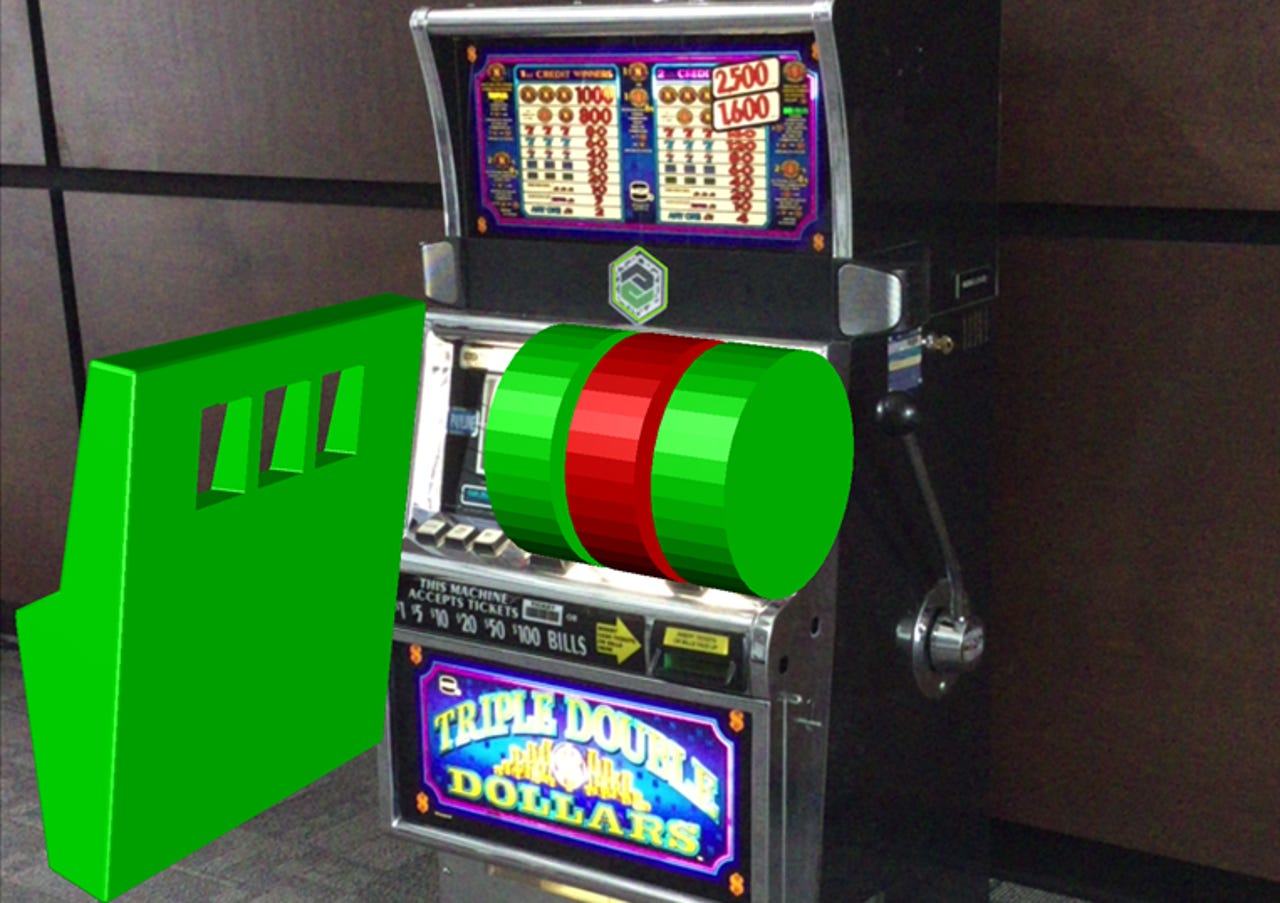Augmented reality: Oracle builds a compelling case


Image supplied by Oracle
Although we read about augmented reality in the popular press, the focus tends toward consumer expereinces like Pokemon Go and Snapchat. Although the consumer side of AR is huge, there are important applications in the enterprise.
A presentation at Oracle's recent Modern Customer Experience conference demonstrated augmented reality applied to field service management. It's one example where the value of AR is obvious and dramatic.
Because the conference was in Las Vegas, the demo showed a field service technician using AR on a mobile phone to repair a broken slot machine. The demo is instantly compelling because of the visuals and shows a practical enterprise use case for augmented reality.
Augmented reality: Repairing a Las Vegas slot machine
Although the field service management industry has been innovating around knowledge delivery to technicians for decades, powerful mobile hardware combined with ubiquitous connectivity and AR software changes the game.
ALSO READ: Augmented reality: An enterprise business imperative
To gain an in-depth view of how AR is changing field service, I put questions to Shon Wedde, Oracle's Senior Director of CX Product Management, and Joshua Bowcott, Product Manager, Oracle Service Cloud. They also captured the sequence of screens in the gallery embedded above.
When is augmented reality most suitable for field service?
Customers adopt AR for various field service applications across all industries. Traditionally, AR emerged where massive pieces of equipment were used -- like in oil and gas -- as well as in M2M (machine-to-machine) situations, along with factory assembly lines. Companies selling complex and connected equipment across industries like manufacturing, medical, and automotive industries, have realized the importance adopting AR for field service.
Augmented reality is most suitable when it involves connected, complex equipment in a data-rich environment.
The concept of AR has been around for years. What's new is our ability to take IoT and customer service technologies, such as policy automation and workflow, and integrate them into an AR scenario. Policy automation guides dynamic animation, and IoT data provide real-time feedback, creating a rich environment for AR and field service technicians to work.
We should also note that AR applications go beyond field service scenarios-enriching not only B2B and B2C interactions, but also internal company training, self-service, and assisted-service experiences as well. We explain those in more detail below.
What type of equipment does the field service technician need?
A field service technician can use any mobile device, including cell phones, tablets, goggles, etc.
How does the equipment vendor create the augmented reality content used by field service technicians?
AR content relies on information that already exists. Companies like PTC ThingWorx utilize existing product CAD drawings, scaling them to match real life animation with PTC software. A field service technician will pull existing information from the contact center's knowledge, base, as they do today.
Featured
For example, an AR-equipped mobile device can "point" at a connected piece of equipment, such as a slot machine, and determine its make and model. The slot machine's problems are also transferred via IoT data. The system uses this information to filter the contact center's existing knowledge base for articles that pertain to this particular instance, eliminating the technician's need to manually figure out the machine's make, model, and where the problems originate.
From there, service solutions like Policy Automation guide a technician step-by-step with animation, to resolve the slot machine's issue. If a replacement part is needed, a technician can use integrated commerce functionalities to order that part, specific to the machine's make and model. Finally, the entire experience is captured and logged alongside the customer's profile and history with the device and the company.
We should note that the Oracle Policy Automation interview and the user's answers dictate which AR experience is loaded. [The gallery embedded above] only shows one path [of many possibilities.]
What are the primary applications today for augmented reality in field service?
Companies across all industries are using AR, especially in those maintaining assets. They are B2B as well as B2C companies. Oracle has seen use cases from wind farms, control systems, and medical equipment to household appliances and motorcycle manufacturers.
AR applications extend far beyond field service. There's a massive shift underway as AR emerges as a new consumer user interface. Facebook is now delivering AR as part of its core platform and we see mainstream AR technology in apps like Snapchat, for example.
Consumers are becoming increasingly comfortable with AR as a new self-service channel. For example, a consumer wouldn't call a field service technician to their house to fix a coffee machine. Instead, AR would walk the consumer through steps on his or her mobile device or tablet to diagnose the coffee machine issue and then either change a coffee filter or click to buy a new coffee filter. This AR scenario isn't designed to enable an agent. Instead, it's bringing the consumer directly into the self-service experience. He or she can interact with an agent via chat or video chat right on the device, as an assisted-service experience if needed.
Furthermore, combining AR with other Oracle technologies enables businesses to service equipment faster, without the need to dispatch a technician or expert, allowing for quicker resolution. One expert technician can capture an entire installation or service experience with AR and shared as a virtual reality training program, available to a company's employees anytime and anywhere in the world.
Disclosure: Oracle is a consulting client